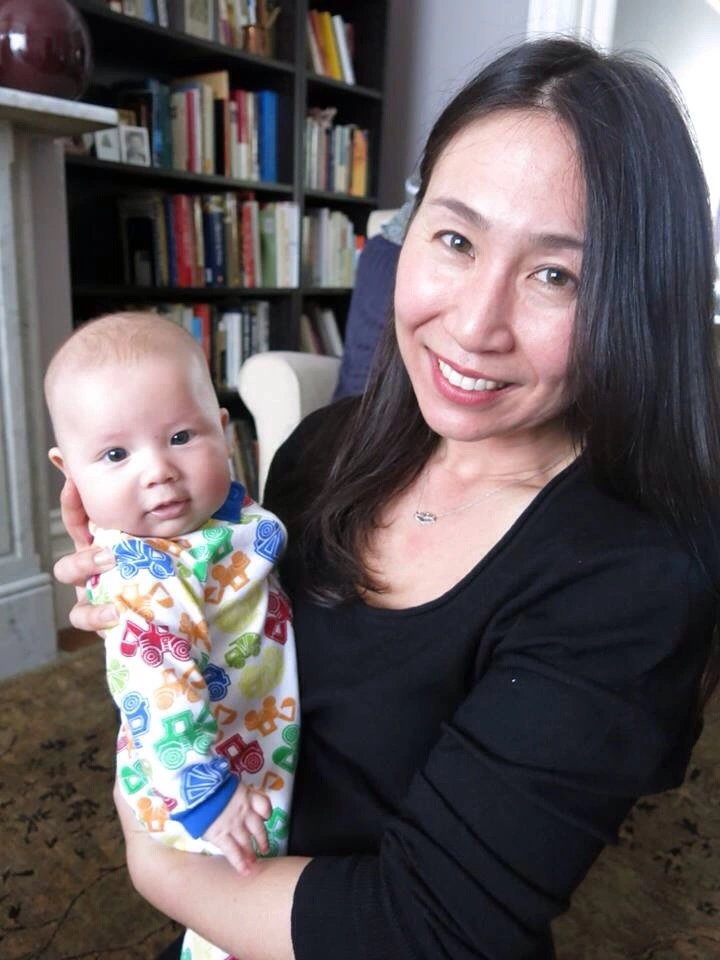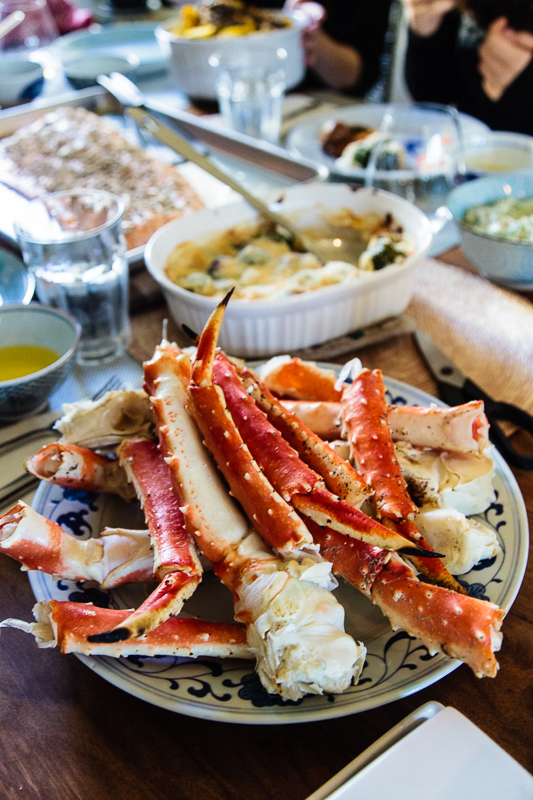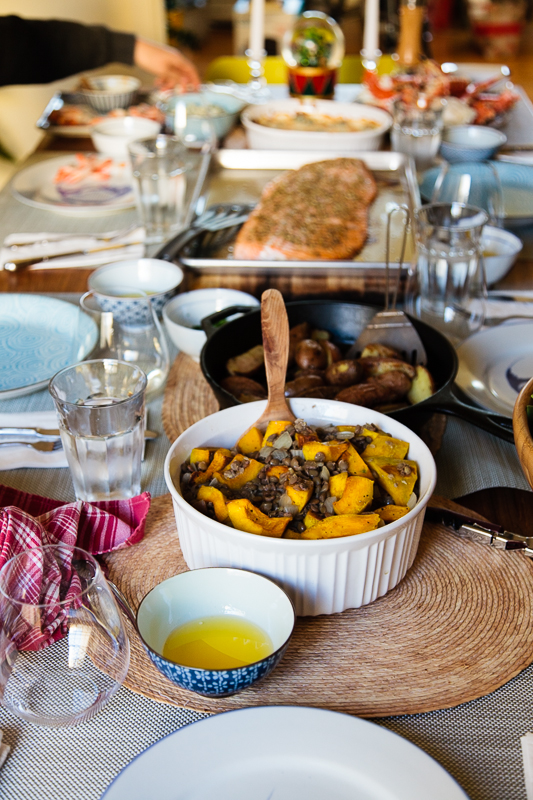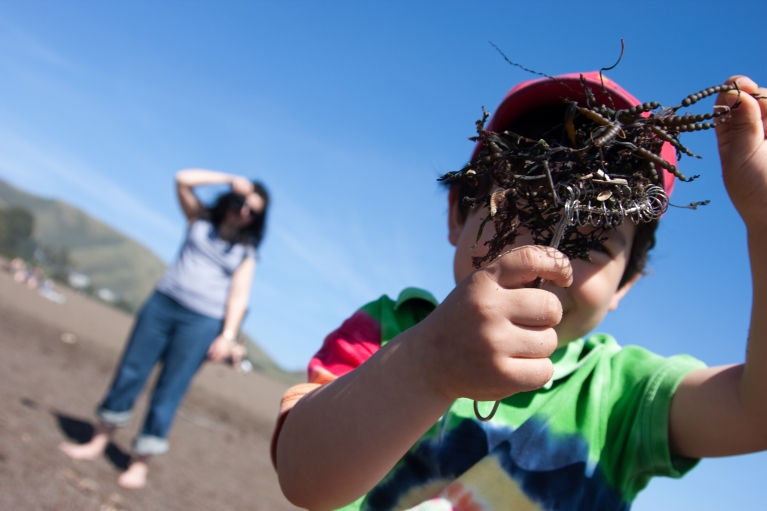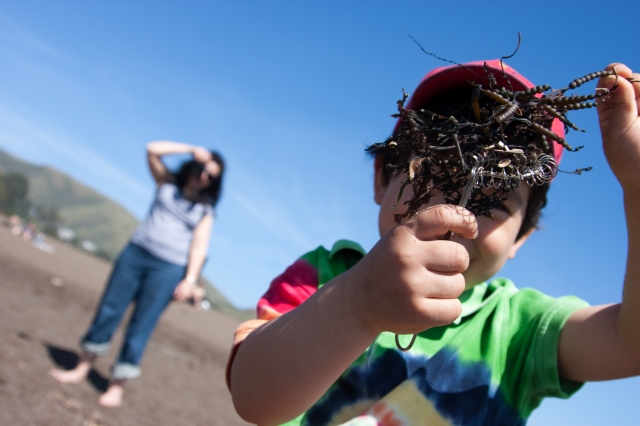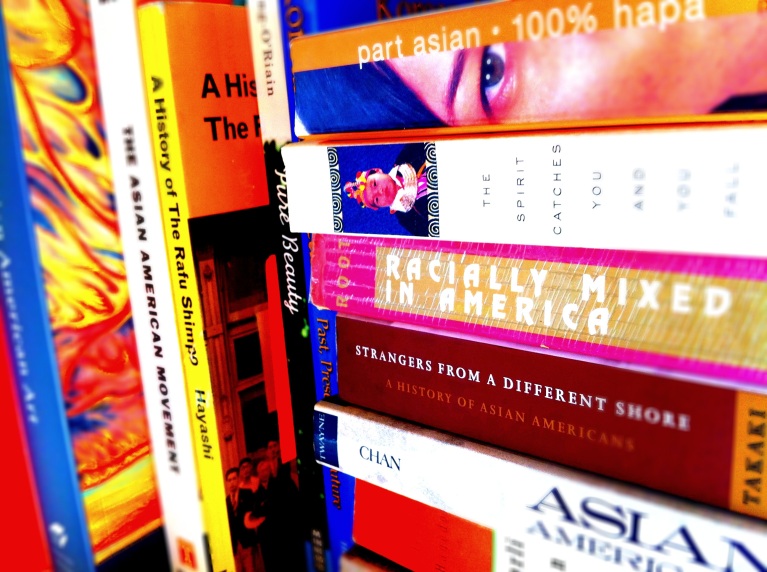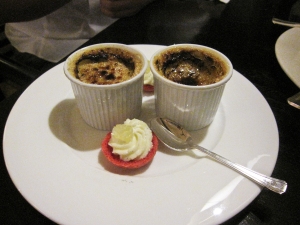
Three gals who met working together in Orlando, all at a party on Brooklyn rooftop, circa 2005. Hapas center and right. 😉
This past Saturday, I drove over the Bay Bridge to Emeryville to have dinner with a dear old friend. She, her partner and her baby boy had just relocated from New Jersey the week before. It was the first time I met the little guy who, as you can see from the photo at the bottom of this post, can sport a very serious demeanor for one so young!
Though technically 10 months old, he came into the world a little early, so he’s more like an 8-month-old. I remember talking to his scared mom in the hospital last June when they weren’t sure how things would turn out … But just look at him! He turned out perfect!
J and I have been friends since 2000 when we bonded working for a publication in Orlando, Florida. Back then, and I guess even now, Orlando was not the most diverse of places. It was shocking to relocate there after living in Berkeley, California, for five years. I remember thinking that I was no longer Hapa here. From the moment I returned to my home state of Florida, I was at worst “a slant-eyed starch-lover” and at best “Chinese.” It was like all I had learned, all I had been part of and fought for and discovered, didn’t matter anymore. There was no room for multiracial dialogue here. Getting someone to say “Asian” or “Asian American” instead of “Oriental” was feat enough in itself.

This was when J and I lived in Brooklyn and only a short bike ride apart — she was in Park Slope and I was in Cobble Hill, circa 2008.
It was special to have a fellow Hapa at work. It was also revealing. In many ways we were a lot alike. We both had Asian mothers who came from their respective countries of origins in their 20’s. We both had American fathers. And we both had been raised in the South in somewhat fanatical evangelical households. But then she was Filipino and African American, and I was Korean and Caucasian. The world looked at us as two very different people, even though when we talked about life, our Asian mothers and our experiences with religion, we shared so much.
J and I would both end up in New York City for many years, including a magical time when we were both in Brooklyn, which is when I took that pic of her at the top of this post. But in 2009 I moved to SF and she went to Seattle. J would return to the Big Apple once again before making this latest trip West.
Over dinner we talked about the couple’s recent trip to Ireland to visit her partner’s family. Cork was beautiful, she said, but not very diverse. One part of her would live there, but the other part knew she didn’t want to be one of the few “brown” people in town. We talked a little about California, about being mixed and about being Hapa. “People don’t blink an eye at mixed kids here anymore,” I told her. “I know,” she said. “Almost every other family I see here is mixed.”
It feels surreal to have this dear old friend as a neighbor again — third time’s a charm! I hope they love it here.


